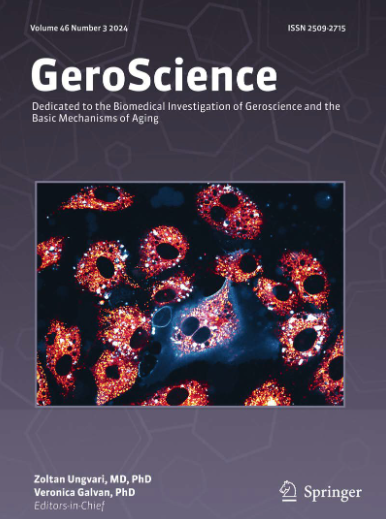A simplified clinical frailty scale predicts mortality in emergency department patients with acute dyspnea.
IF 5.4
2区 医学
Q1 GERIATRICS & GERONTOLOGY
引用次数: 0
Abstract
To evaluate a simplified version of the Clinical Frailty Scale (SCFS) among older adults presenting to the emergency department (ED) with acute dyspnea. In this retrospective single-center cohort study, we included patients from the Acute Dyspnea Study (ADYS) cohort. Severity of illness was assessed using the Medical Emergency Triage and Treatment System (METTS). SCFS was operationalized using existing data on municipal care services from the ADYS database and divided into three levels. SCFS 1: Not frail patients with no need for municipal care services, SCFS 2: Patients with municipal care services, including home care, and SCFS 3: Patients with residence in a short-term care facility or nursing home. The primary outcome was 90-day mortality and hospitalization. Multivariable Cox and logistic regression analyses were used to assess associations between SCFS and outcome variables. SCFS criteria were met in 35.2% of patients (668 patients, SCFS group 2 and 3). These individuals had a higher comorbidity burden and increased 90-day mortality (20.9%, p < 0.001). SCFS group 3 was independently associated with a higher risk of 90-day mortality (HR = 2.60, 95% CI: 1.27-5.29, p = 0.009), compared to group 1. ROC curve analysis showed that combining SCFS with METTS significantly improved predictive performance (DeLong's test: p = 0.015 and p = 0.0322 in respective models). For hospitalization, SCFS group 3 was associated with hospitalization independent of age, sex, BMI, comorbidities, and readmission, when compared to SCFS group 1 (OR = 2.57, CI:1.11-6.71, p = 0.037). This association was attenuated and nonsignificant after further adjustment for METTS. SCFS is an independent predictor of 90-day mortality in older ED patients with acute dyspnea. When combined with triage scores like METTS, its predictive value improves. These findings support the potential clinical utility of incorporating frailty assessment into ED triage to aid risk stratification and guide care decisions.简化的临床虚弱量表预测急诊科急性呼吸困难患者的死亡率。
评估急诊科(ED)出现急性呼吸困难的老年人的简化版临床虚弱量表(SCFS)。在这项回顾性单中心队列研究中,我们纳入了急性呼吸困难研究(ADYS)队列的患者。使用医疗紧急分类和治疗系统(METTS)评估疾病的严重程度。SCFS是利用ADYS数据库中有关市政护理服务的现有数据实施的,并分为三个层次。SCFS 1:不需要市政护理服务的体弱患者;SCFS 2:接受市政护理服务(包括居家护理)的患者;SCFS 3:住在短期护理机构或养老院的患者。主要终点为90天死亡率和住院率。采用多变量Cox和logistic回归分析来评估SCFS与结局变量之间的关联。35.2%的患者(668例,SCFS组2和3)符合SCFS标准。这些个体有更高的合并症负担和更高的90天死亡率(20.9%,p < 0.001)。与第1组相比,SCFS组3与较高的90天死亡率独立相关(HR = 2.60, 95% CI: 1.27-5.29, p = 0.009)。ROC曲线分析显示,SCFS联合METTS显著提高了预测性能(DeLong检验:各自模型p = 0.015和p = 0.0322)。住院方面,与SCFS 1组相比,SCFS 3组与住院相关,与年龄、性别、BMI、合并症和再入院无关(OR = 2.57, CI:1.11-6.71, p = 0.037)。在进一步调整METTS后,这种关联减弱且不显著。SCFS是老年ED急性呼吸困难患者90天死亡率的独立预测因子。当与METTS等分诊评分相结合时,其预测价值得到了提高。这些发现支持将衰弱评估纳入ED分诊的潜在临床应用,以帮助风险分层和指导护理决策。
本文章由计算机程序翻译,如有差异,请以英文原文为准。
求助全文
约1分钟内获得全文
求助全文
来源期刊

GeroScience
Medicine-Complementary and Alternative Medicine
CiteScore
10.50
自引率
5.40%
发文量
182
期刊介绍:
GeroScience is a bi-monthly, international, peer-reviewed journal that publishes articles related to research in the biology of aging and research on biomedical applications that impact aging. The scope of articles to be considered include evolutionary biology, biophysics, genetics, genomics, proteomics, molecular biology, cell biology, biochemistry, endocrinology, immunology, physiology, pharmacology, neuroscience, and psychology.
 求助内容:
求助内容: 应助结果提醒方式:
应助结果提醒方式:


